13 Life Patterns of Prolific Builders and Creatives
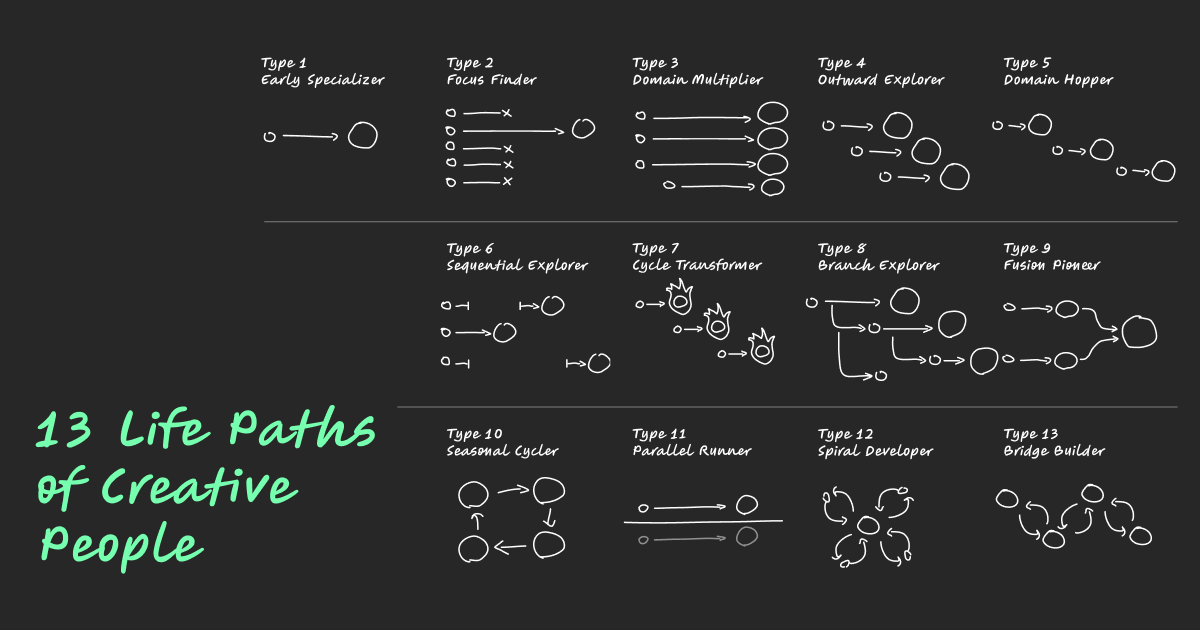
Introduction
I've never enjoyed the (often presented as) static concept of specialist vs generalist. Reality is far more interesting than that. The people who build meaningful work across multiple domains move through different phases and evolve over time.
Although, I believe there are distinct patterns across industries and eras - like migratory paths that different types of builders and creatives tend to follow.
In this 2011 research paper, "Life Stages of Creativity", Robert and Michèle Root-Bernstein talk about how how creativity evolves across different stages of life, emphasizing the interplay between age, experience, and creative output. This work is part of a broader discourse on how creativity can appear differently depending on the individual’s life stage.
Disclaimer: I'm not a trained psychologist and these are simply msings. Feel free to debate me on this!
Click here to jump to Creative Migratory Patterns.
They suggested six typologies of creative life stages.
- Type 1 - Early specialization, single mature focus.
Find their calling very early and stick with it - Type 2 - Early breadth, mature focus
Start with wide interests before finding primary calling - Type 3 - Earth breadth, mature breadth
Maintain multiple pursuits simultaneously, no one true calling - Type 4 - Early specialization, mature breadth
Start as specialists who later branch out - Type 5 - Early specialization, serial mature foci
Focus intensely on one field before moving to another - Type 6 - Early breadth, serial mature foci
Develop multiple skills early but explore them sequentially
I want to introduce seven more.
- Type 7 - Cyclical reinvention, serial transformative identities
Complete and radical reinvention cycles - Type 8 - Early mastery, constrained branching breadth
Start with one pursuit that spawns related sub-specialties - Type 9 - Early parallel interests, mature synthesis
Combine separate domains to create new fields - Type 10 - Early sampling, seasonal rotation.
Rotate through pursuits in a semi-regular pattern - Type 11 - Early parallel trajectories, strategic separation
Maintaining parallel lives; some creative, others not. - Type 12 - Early theme identification, recursive progression
Return to same themes with new perspectives - Type 13 - Early core focus, strategic exploration for enrichment
Study different domains to enhance primary field
Creative Paths Plotted on a 3D Chart
I like to see these as creative migratory patterns. Here's also a cool 3D chart if you want to see them plotted. Doesn't really tell you much besides that our creative lives are incredibly messy.
Whether you're building companies, creating art, developing technology, or pursuing scientific breakthroughs, understanding these patterns can help you recognize and embrace your own highly variable path.
Creative Migratory Patterns
Type 1 - Early Specializer Prodigy
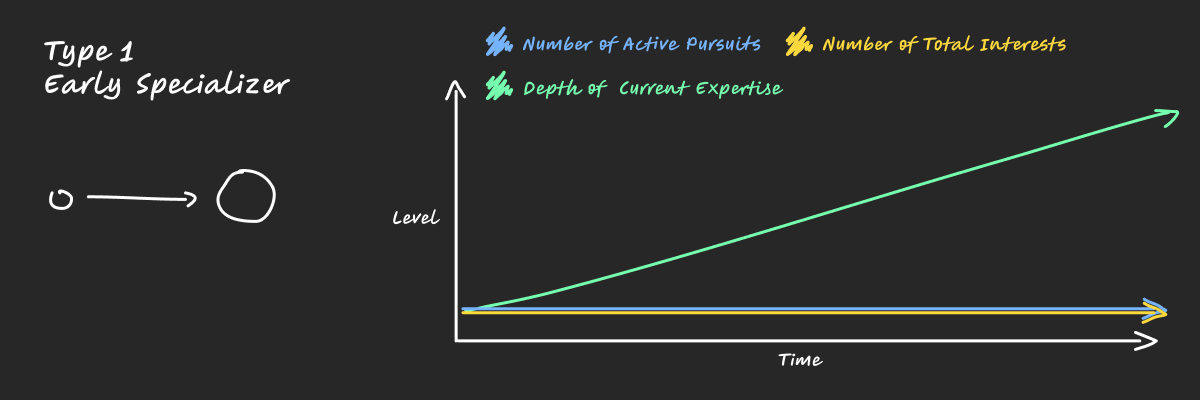
Type 1 Creatives have found their calling very early and dedicate themselves to mastering it. They dive deep into their chosen field and continue to innovate within it throughout their lives. Their journey is marked by increasing sophistication within a single domain rather than breadth across multiple areas.
- Amadeus Mozart (Music)
- Bobby Fischer (Chess)
- Mark Zuckerberg (Social platforms)
- Vitalik Buterin (Crypto/blockchain)
- MrBeast (Content creation from age 13)
- Magnus Carlsen (Chess from age 5)
- Michelle Kwan (Figure skating from age 5)
Type 2 - Early Exploration to Specialization

Type 2 Creatives start with wide-ranging interests before finding their primary calling. Charles Darwin, for example, was interested in collecting beetles, geology, and natural history before developing his evolutionary theories. The early exploration phase helps inform their later specialized work, giving them a broader perspective within their chosen field.
- Charles Darwin (Collecting beetles, geology → Theories of Evolution)
- Tobi Lütke (Snowboarding → Programming → Shopify)
- Brian Armstrong (Started various projects before focusing on Coinbase)
- Sara Blakely (Sold fax machines, tried comedy before focusing on Spanx)
- Whitney Wolfe Herd (Started multiple ventures before focusing on Bumble)
Type 3 - Incremental Polymath
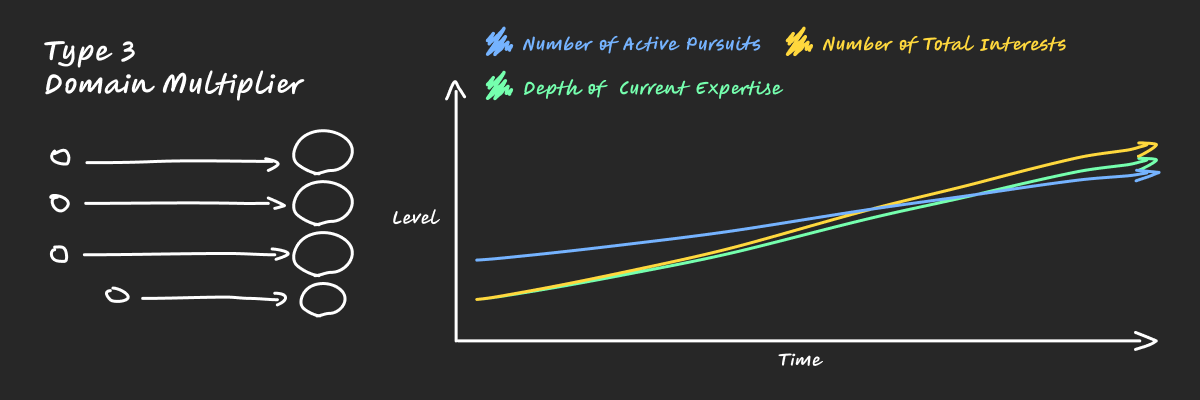
Type 3 Creatives are probably the closest to "true" Renaissance individuals who maintain multiple creative pursuits simultaneously throughout their lives and may even add more. Leonardo da Vinci exemplifies this type, working as an artist, engineer, anatomist, and inventor concurrently. Their strength lies in cross-pollinating ideas between different domains.
- Donald Glover (Actor, musician, writer, producer)
- Jessica Alba (Actress, entrepreneur with Honest Company)
- Tim Ferriss: (Books, podcasting, investing, health experimentation)
- FKA Twigs (Music, dance, visual art, martial arts)
Type 4 - Specialization to Diversification
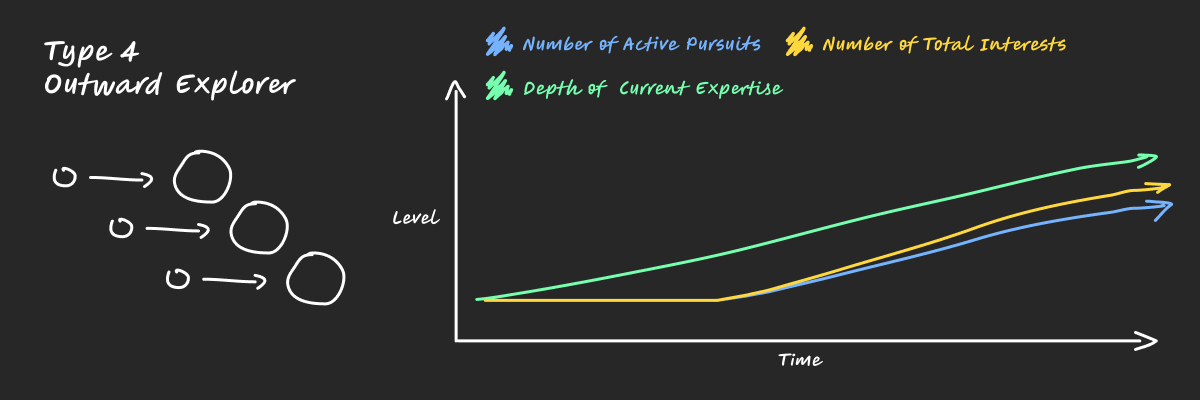
Starting as specialists, Type 4 Creatives maintain their original expertise while adding new domains. Benjamin Franklin began as a printer but expanded into science, invention, diplomacy, and writing. Their initial mastery gives them confidence to explore other fields and acts as a springboard.
- Joe Rogan (Comedy → UFC commentary → Podcasting)
- Dr. Peter Attia: Surgeon → performance medicine → longevity expert
- Richard Feynman (math & physics → various new sciences → bongo drums)
- Dr. Dre (Music producer → Beats by Dre → Various business ventures)
- James Dyson (Industrial design → Multiple product categories)
Type 5 - Serial Specialization
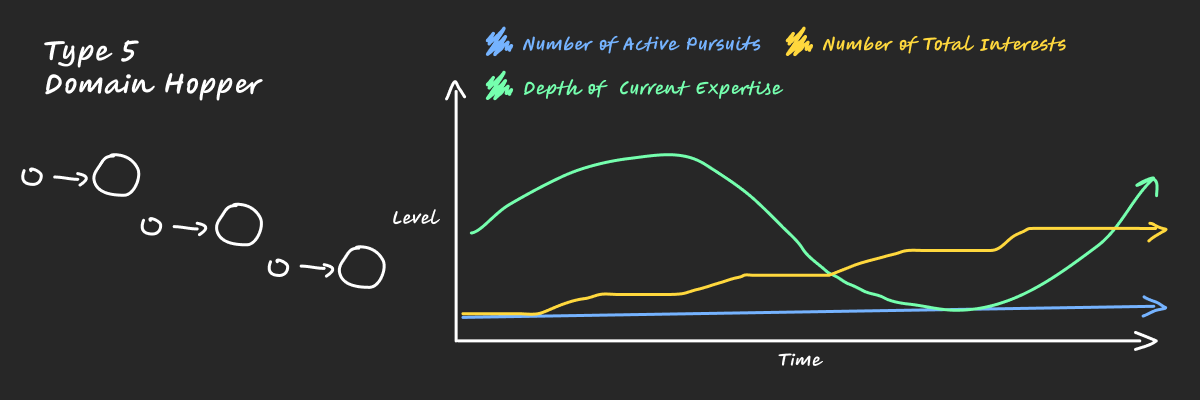
Type 5 Creatives immerse themselves completely in one field before moving to another, rather than maintaining multiple pursuits simultaneously. Johann Wolfgang von Goethe focused intensely on literature, then science, then color theory, treating each as a distinct phase.
- Jack Dorsey (Twitter → Block/Square)
- Reid Hoffman (PayPal → LinkedIn → Venture Capital)
- Elizabeth Gilbert (Journalism → Fiction → Self-help)
- Susan Wojcicki (Google → YouTube)
Type 6 - Diversified Serial Specialization

Combining aspects of Types 3 and 5, Type 6 Creatives develop multiple skills early but explore them sequentially. Louis Pasteur developed expertise in chemistry, biology, and microbiology, focusing intensely on each area in turn while drawing on his broader knowledge base.
- Ken Jeong (Doctor → Comedy → Acting)
- Jeff Goldblum (Acting → Jazz musician → Documentary host)
- John Legend (Management consulting → Music → Various ventures)
- Stewart Butterfield (Games → Flickr → Slack)
Type 7 - The Phoenix Pattern
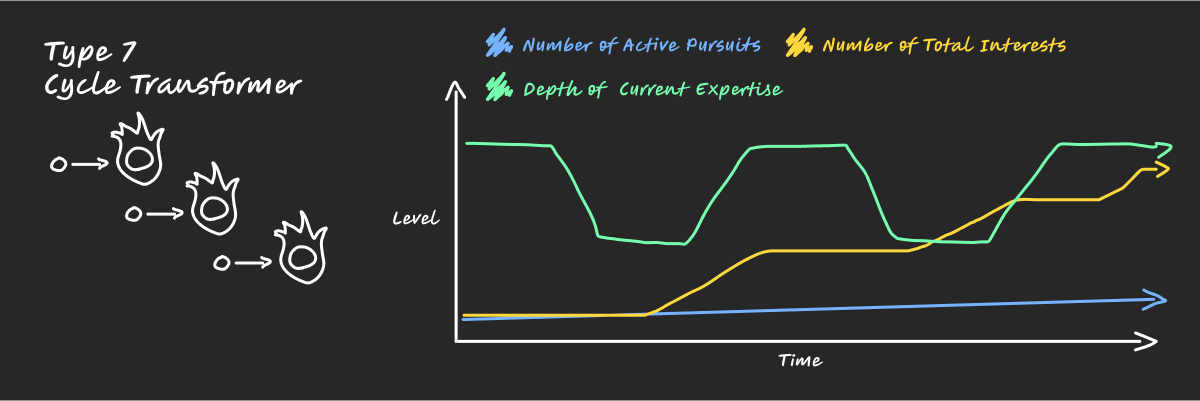
Type 7 Creatives experience distinct cycles of reinvention, where they completely abandon their previous work and emerge in an entirely new form. Often, they will "burn down" their existing creative identity and rebuild from scratch. Each phase might be unrecognizable from the last, marked by radical shifts in medium, philosophy, or approach. Think of David Bowie's dramatic persona transformations or John Cage's evolution from traditional composer to avant-garde sound artist.
- David Bowie (Constant creative reinvention as core brand)
- Martha Stewart (Stock broker → Catering → Media empire → Prison → Comeback)
- Bob Dylan (Folk → Electric → Country → Born-again Christian → Elder statesman)
- Arthur Rimbaud (Poet → Arms dealer → Explorer)
Type 8 - Branching Sub-Specialities

Type 8 Creatives start with one major creative pursuit but gradually spawn multiple related sub-specialties, like a river branching into tributaries. Each new branch flows from but doesn't replace the original expertise.
- William Morris (Art → Furniture design → Wallpaper → Publishing → Political writing)
- Patrick McKenzie (patio11): Programming → SaaS → writing about business
- Thomas Jefferson (Architecture → Politics → Education → Agriculture)
- Benjamin Franklin (Printing → Publishing → Science → Diplomacy)
- Alexander Borodin (Chemistry → Music → Medicine)
- Le Corbusier (Architecture → Urban planning → Furniture design → Writing)
- Casey Neistat (Filmmaker → Vlogger → Tech founder → Content creator)
- Casey Reas (Artist → Processing language creator → Digital art pioneer)
- Virgil Abloh: Architecture → fashion → art → music
- Tyler, The Creator (Rapper → Fashion → Festival creator → Media mogul)
Type 9 - Fusion Pioneering
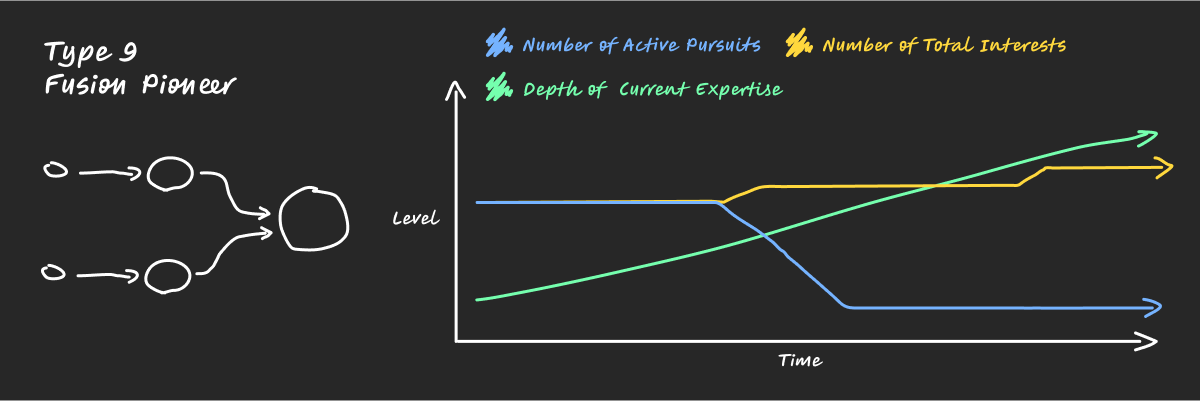
Type 9 Creatives synthesize separate domains in novel ways into a new and/or hybrid field. Rather than simply working in multiple areas, they're driven to forge new connections and often establish entirely new creative territories.
- Ada Lovelace (Mathematics + mechanical engineering → computer programming)
- Buckminster Fuller (Architecture + geometry + engineering → geodesic domes)
- William Blake (Poetry + visual art + printing → illuminated books)
- Marcel Duchamp (Art + philosophy + everyday objects = conceptual art)
- Claire Evans (Music + technology + science writing)
- Jonathan Harris (Data visualization + storytelling + art)
- Beeple (Traditional art + NFTs + digital media)
- Nathan Barry: Design + teaching → ConvertKit
- James Clear: Sports + psychology + business → Atomic Habits
Type 10 - "The Seasonal Cycler"
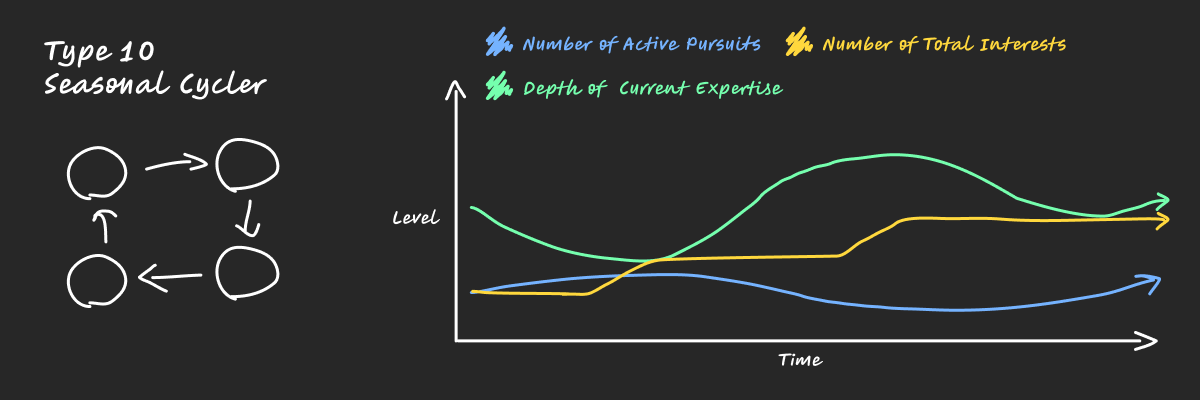
Type 10 Creatives have multiple creative pursuits that they rotate through in a predictable, seasonal pattern. Unlike Type 5's serial specialization, there's a rhythmic return to each domain. They might, for instance, write poetry in winter, paint in spring, compose music in summer, and sculpt in fall, repeating this pattern year after year. Each return to a medium is enriched by the intervening experiences.
- Johann Wolfgang von Goethe (Writing in winter, botanical studies in spring)
- William Wordsworth (Walking tours in summer, writing in winter)
- Claude Monet (Painting different locations based on seasons)
- Henry David Thoreau (Writing seasons tied to natural cycles)
- Paul Gauguin (Alternating between Paris and Tahiti)
- Bo Burnham (Comedy → Music → Directing → Back to comedy)
- Tom Ford (Fashion seasons → Film directing during breaks)
- Lin-Manuel Miranda (Theater → Film → Back to theater)
- Daniel Day-Lewis (Acting → Cobbling → Acting)
Type 11 - The Underground/Overground
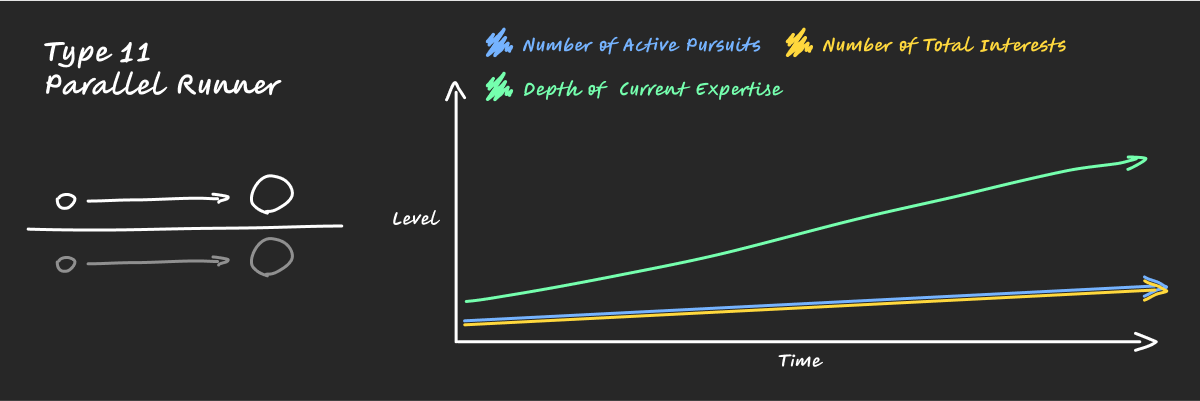
Type 11 Creatives maintain two parallel creative lives - one public and conventional, another private and experimental. Unlike Type 3's open polymathy, there's a strategic separation between domains. Some may also seem like Type 1's but they're actually developing multiple skills or projects in secret.
- Franz Kafka (Insurance clerk by day, writer by night)
- Wallace Stevens (Insurance executive + modernist poet)
- Charles Ives (Insurance executive + experimental composer)
- Anthony Trollope (Post office surveyor + novelist)
- Fernando Pessoa (Commercial translator + multiple poetic personas)
- Emily Dickinson (Private poetry cache)
- Pieter Levels (Freelancing + building startups)
- AWS engineers building side SaaS products
- Brandon Sanderson (Fantasy novels + secret projects)
- Virgil Abloh (Architecture practice + fashion design)
Type 12 - The Spiral Developer
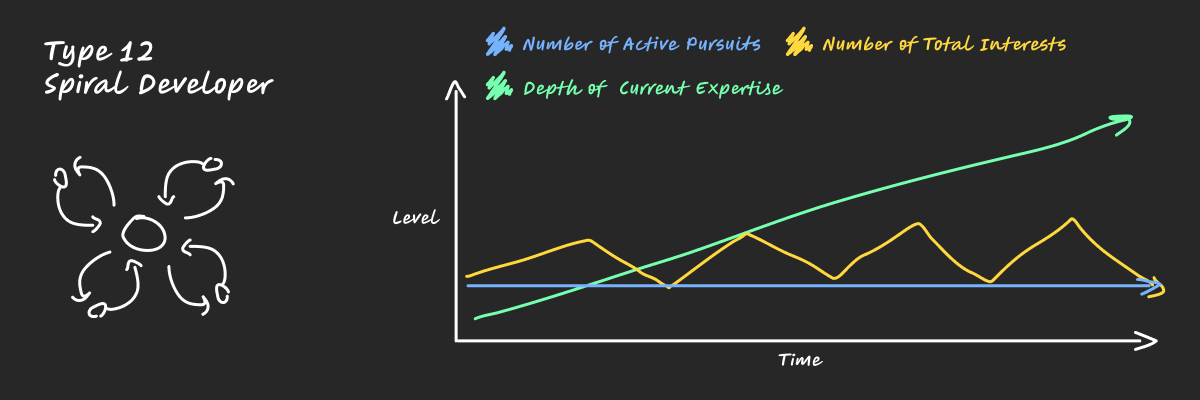
Type 12 Creatives repeatedly return to the same themes or problems throughout their lives, but each time from a more advanced starting point and with new tools or perspectives. Unlike Type 1's linear specialization, their progress is cyclical but ascending. Like a spiral staircase, they keep circling back to core interests but at progressively higher levels of sophistication and insight.
- Rembrandt (Self-portraits throughout life)
- Paul Cézanne (Mont Sainte-Victoire series)
- William Butler Yeats (Celtic mythology reimagined)
- Claude Monet (Haystacks and water lilies series)
- Jorge Luis Borges (Labyrinths, mirrors, infinity)
- Naval Ravikant (Wealth creation, happiness philosophies)
- Seth Godin (Marketing principles revisited)
- Malcolm Gladwell (Social psychology themes)
- Simon Sinek (Leadership concepts)
- Jason Cohen (Each new venture/experience adds depth to his previous knowledge)
Type 13 - The Cross-Pollinator
These creators systematically rotate through different domains specifically to gain new perspectives to apply to their primary field. Unlike Type 4's natural diversification, there's a strategic purpose to their exploration. They might deliberately study dance to improve their architecture, or learn programming to enhance their music composition, always with the intent of bringing fresh approaches back to their main practice.
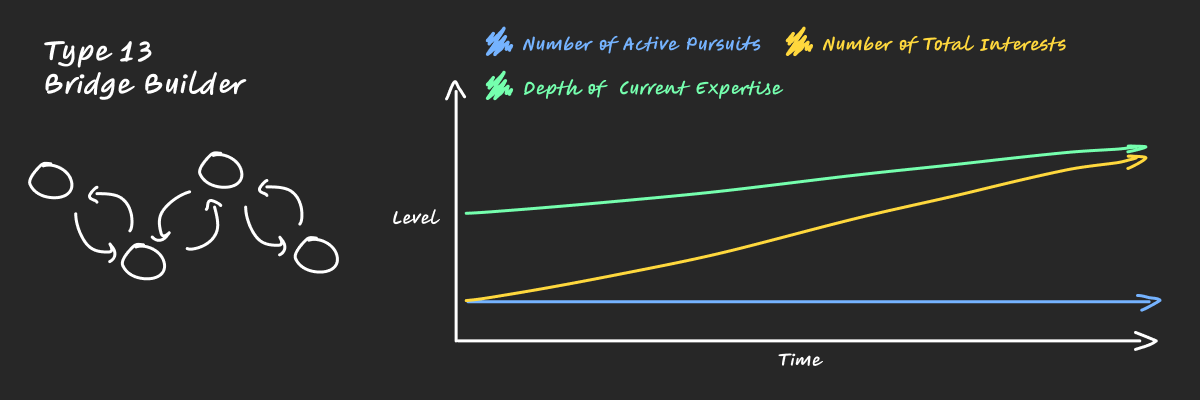
- Leonardo da Vinci (Anatomy → art)
- Alexander Calder (Engineering → sculpture)
- Samuel Taylor Coleridge (Chemistry + philosophy → poetry)
- Wassily Kandinsky (Music → abstract painting)
- Frederick Law Olmsted (Farming + journalism → landscape architecture)
- James Clear (Biology + psychology + business → habits)
- Bret Victor (Animation + UX → programming)
- David Epstein (Sports + genetics + performance)
- Tim Urban (Comedy + science + psychology → Wait But Why)
Conclusion
While these are mostly distinct patterns, I think they can only go so far as to capture a slice of time. Likely, many creatives transition from type to type as they continue to experiment. Some may even be blends between types (you may notice some examples of names repeated).
Regardless, the point of this exercise was the map out the ways humans transform as they build. See this as permission to "contain multitudes".
And if you're interested in more of what I have to say, you can follow along here:

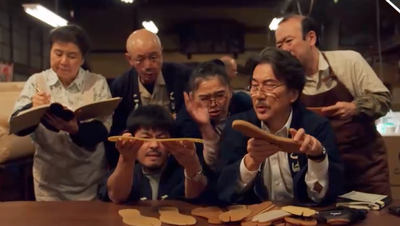
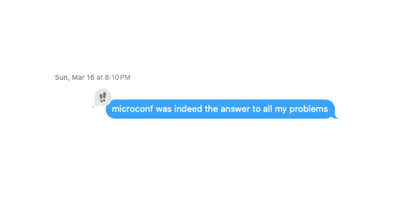
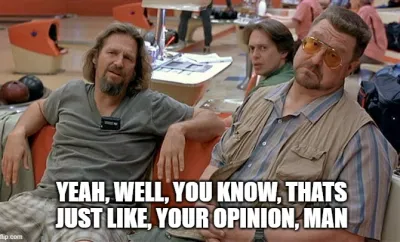
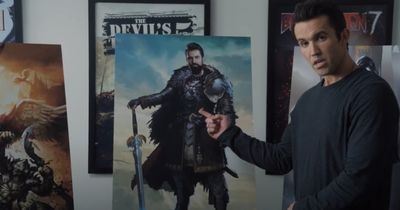

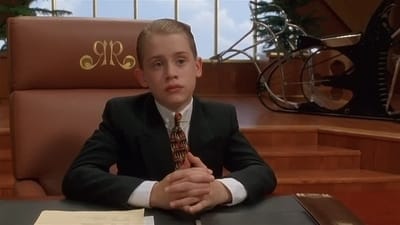
Member discussion